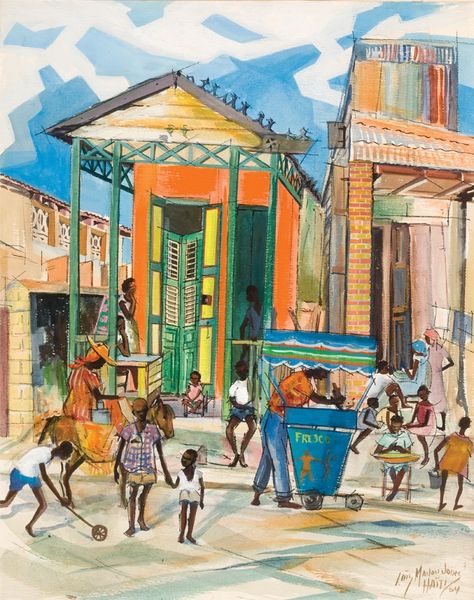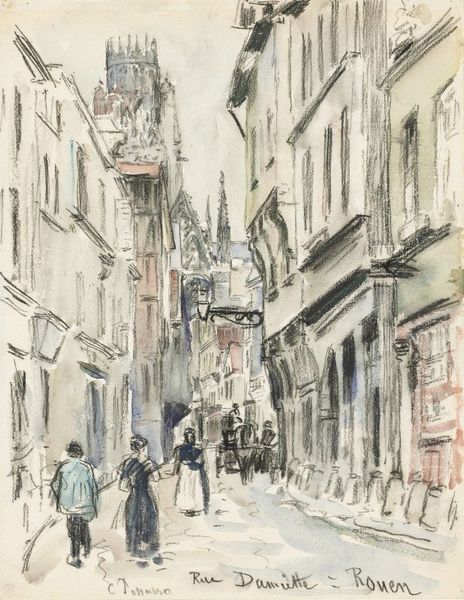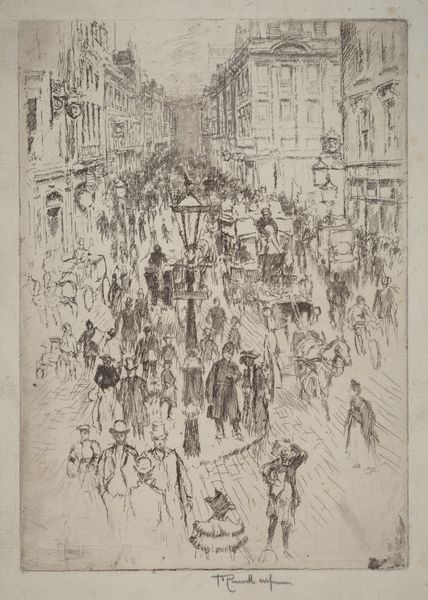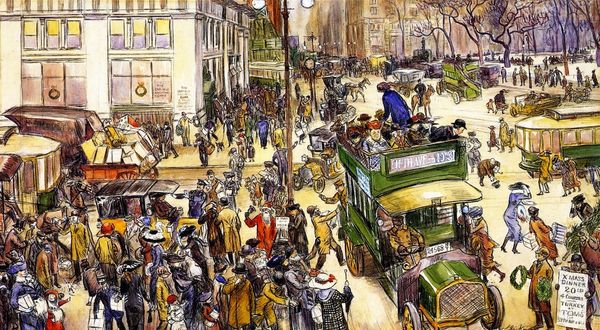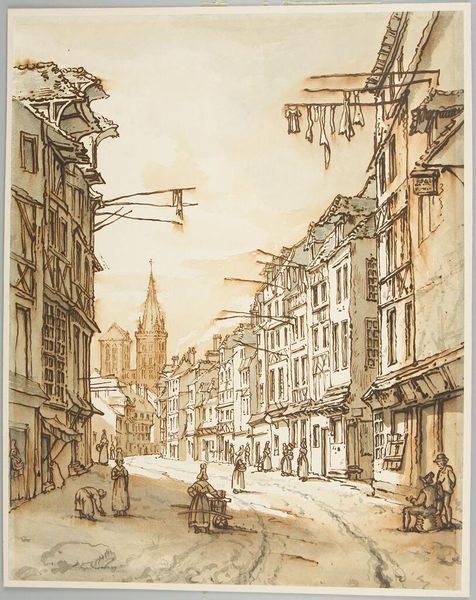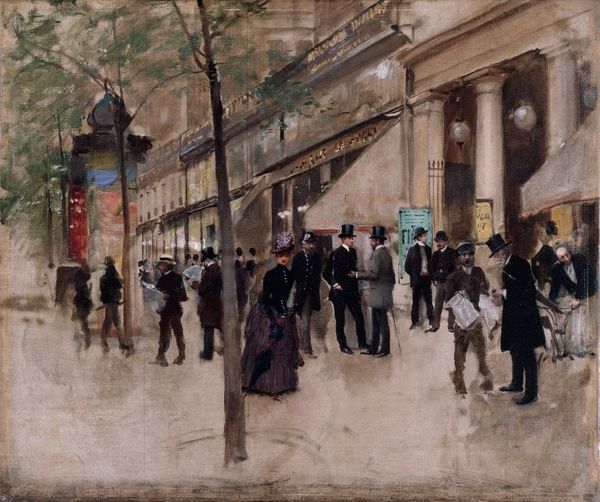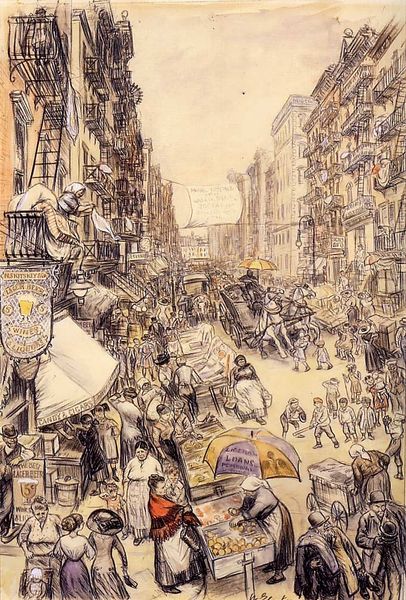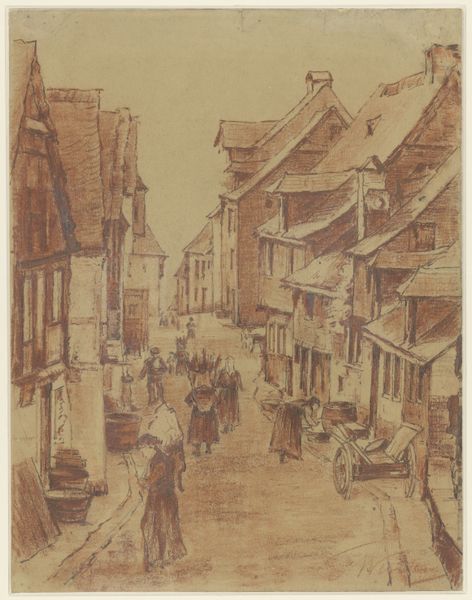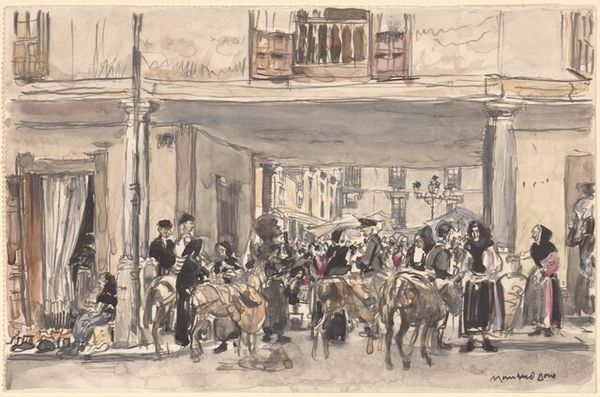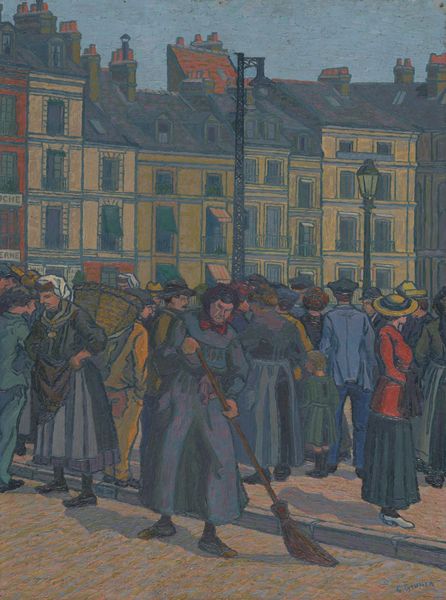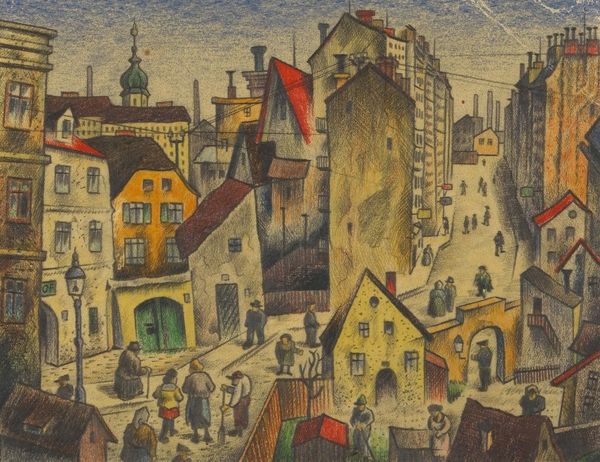
Dimensions: overall: 127 × 92.08 cm (50 × 36 1/4 in.) framed: 156.85 × 121.92 × 8.26 cm (61 3/4 × 48 × 3 1/4 in.)
Copyright: National Gallery of Art: CC0 1.0
Curator: Philip Evergood’s "Sunny Side of the Street," created in 1950 using mixed media including acrylic paint and coloured pencil, offers us a vibrant scene of urban life. What’s your first reaction to it? Editor: I’m immediately struck by the layering – the actual materials and the chaotic scene – but there is also a somber and slightly distorted feeling. Like a half-remembered childhood. Curator: It’s a potent image. Evergood was a committed Social Realist. Seeing this now, over seventy years later, what does this cityscape suggest about community and belonging? Editor: Well, let’s think about what’s literally depicted here. The children, hopscotch…roller skates…games marked in white. Games like hopscotch are really cultural symbols of community itself, aren't they? Shared spaces of play that echo traditions, and this invites consideration of who has access to joy. Who feels welcome on this "sunny side" he is showing us. Curator: Absolutely, the symbolism runs deep. I think we have to look at it as Evergood capturing not just what he saw, but also what he understood about marginalization. Is there commentary in his approach? Editor: Consider the buildings that enclose the view—a claustrophobic feeling even amid this crowded activity. And then this angelic figure, near to someone holding a cane – together standing away from the group. Those pale skin tones so very different than those around them? This work is clearly about something beyond happy childhood, I agree. There are racial dimensions. I mean, that this artist felt driven to create this points to inequity, social fractures that are maybe hard to grasp today. Curator: Exactly. There are clear divides in society. Evergood also hints at the possibilities inherent within those fractures, don't you think? The work presents a moment of possibility to build understanding from these fragmented scenes. Editor: That's interesting. There is something so fleeting and transient about children's games that adds a touch of the ethereal to that theme of the everyday and belonging. The whole street almost feels transient. Curator: This interplay really elevates the artwork, doesn't it? Revealing an intersectional discourse on identity, exclusion, and possibility that speaks just as potently today. Editor: Agreed. I came here seeing a slightly gloomy depiction, but seeing these layers emerge really highlights that Evergood has given us more than he seemed at first to have intended.
Comments
No comments
Be the first to comment and join the conversation on the ultimate creative platform.

